It’s no secret I love superfoods, especially when they’re simple, whole foods. I enjoy sharing my discoveries with you guys by summarising what I learn along the way.
Today, I want to talk about the amazing broccoli sprouts: benefits, nutrition, uses and where to get them (or how to grow yourself). I learnt about broccoli sprouts while listening to a podcast with the very insightful Dr Rhonda Patrick of Found My Fitness. I instantly became intrigued and I think they will become a huge hit in 2019.
What Are Broccoli Sprouts?
Sprouts of any vegetable are simply its humble beginnings. Before broccoli grows to a full-size head ready to eat, it sprouts up from the seeds. These sprouts look like tiny little plants or seeds with a stem and green leaves protruding from it.
While most veggies – and cruciferous ones, in particular – are great sources of nutrition and powerful disease-fighters, sprouts are known for their extremely high concentration of nutrition. Broccoli sprouts are often talked about in conjunction with sulforaphane, which is a compound we will talk a lot about in this article.
Broccoli Sprouts Nutrition
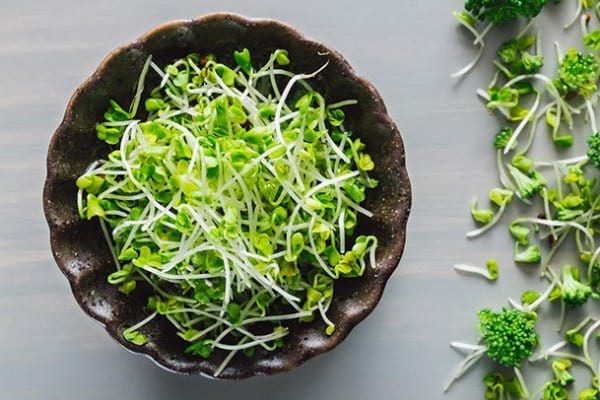
What is in your average 115 g / 4 oz. serving of broccoli sprouts? Spoiler alert: it’s not quite the same as broccoli itself, so don’t be quick to compare. Broccoli boasts impressive amounts of vitamin A and vitamin K, which you won’t find here. Still, this tiny sprout picks up the slack in other places – trust me!
- 35 calories
- 5 grams carbohydrates
- 2 grams of protein
- 0.5 gram
- 4 grams of fibre
- 54 milligrams vitamin C (60% DV)
- 90 micrograms vitamin A (10% DV)
- 78 milligrams calcium (6% DV)
- 720 micrograms iron (4% DV)
For so few calories, you really get a load of important vitamins with these guys. However, that’s not what makes broccoli sprouts stand out…listen up!
Broccoli Sprouts & Sulforaphane
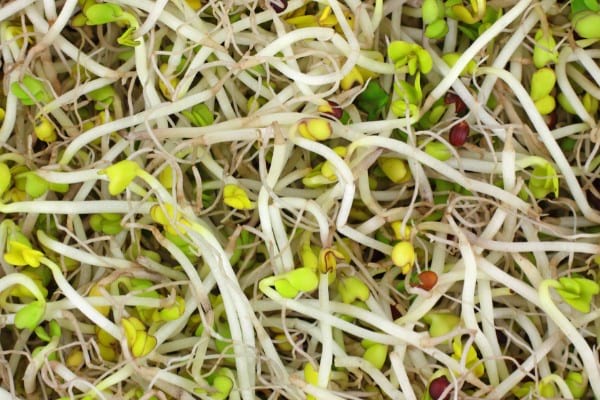
Sulforaphane is a phytonutrient (plant nutrient) that belongs to a group of phytochemicals called isothiocyanates. As a compound, sulforaphane is typically found in cruciferous vegetables including cauliflower, brussels sprouts, cabbage, radish, bok choy, and you guessed it – broccoli! This green veggie is the best source of the stuff out there, even in comparison to all other cruciferous veggies.
Because it is found in broccoli fruit, it’s also found in broccoli sprouts. In a more potent source than the food itself due to the large concentration in a small plant (up to 100x as much!). Plus, you want to consider the fact that you’ll consume broccoli sprouts raw. Cooking any plant food compromises nutrition, even if slightly.
Moreover, having too much raw cruciferous plant matter can cause digestive issues and an upset tummy pretty quickly. This makes broccoli sprouts an unparalleled source of sulforaphane in the world of nutrition because they are much easier to digest raw.
So, now we know it’s a compound, but what does that entail? Let’s dive a little deeper into the benefits. First, we begin with glucoraphanin. We’re gonna get a little geeky for a minute.
You’ll find a good amount of this stuff in the sprouts of both cauliflower and broccoli. When broken down by chewing, chopping, blending or otherwise processing, you will unlock the key to sulforaphane production. The enzyme that those processes produce – myrosinase – will turn glucoraphanin into sulforaphane.
Here, we run into our next big concept: isothiocyanates. The metabolites formed through compounds known as glucosinolates through enzyme myrosinase (which we got to know above), these compounds are also activated when plant tissue is processed. This is exactly what makes sprouts superior to fruit: it becomes inactive when consistently exposed to heat (e.g. when boiling the vegetable). Voila! It’s sprout witchcraft (or science, really). Your body is really good at that.
It is essentially the most powerful activator of Nrf2, regulating over 200 different genes by acting on antioxidant response elements. It also does a great job at increasing cellular glutathione – an antioxidant – in the body. Some of these genes can reduce the effects of harmful compounds in the body. These are exactly what make this compound a potent anti-cancer food.
Benefits Of Sulforaphane
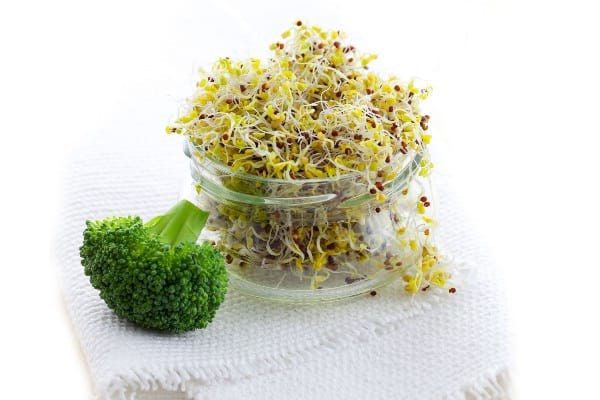
Broccoli sprouts (and consumption of lightly cooked cruciferous veggies) a few times a week are tied to lowering LDL (“bad”) cholesterol, reducing the risk of cancer, and increasing longevity. Sulforaphane is also considered a nootropic which can be traced to its ability to cross the blood-brain barrier.
Nootropics are considered natural brain-boosting compounds, and this might be a reason why it’s good for folks who are on the autism spectrum, or why it’s believed to reduce the risk of neurodegenerative disease. Let’s delve further into the details.
First, it’s most notoriously known as a mighty protector against several types of cancer including breast, prostate, lung, skin, and stomach cancers. Many sources of research, including this study, claim that 3-5 servings of cruciferous veggies per week effectively reduces cancer risk by 30-40 per cent! This is due to the ability isothiocyanates have to deactivate phase I biotransformation enzymes which essentially inhibits the conversion of benign carcinogens into active ones.
It is also known to slow the rate of development of cancer markers such as tumour growth. If they’re deactivating, they must be activating something else, right?
They are also known to activate phase II detoxification enzymes which are mediated by the Nrf2 pathway. This is where the deactivation of carcinogenic agents happens when the transcription of the gene is altered. Those agents – such as known carcinogen benzene from car exhaust fumes and cigarette smoke – take on the ability to become water-soluble which means that they can be more easily excreted from the body.
According to this study, this amazing compound also includes chemopreventive properties which reduce the negative effects of chemotherapy during cancer treatment without negatively impacting healthy cells.
This study – which focuses on the impact of sulforaphane’s interactions in people with Autism Spectrum Disorder – claims it “upregulates genes that protect aerobic cells against oxidative stress, inflammation, and DNA-damage.”
These protective abilities may reverse abnormalities with ASD in addition to other diseases from autoimmune diseases to cancer. This is because most disease begins at the cellular level such as cancer, and inflammation often being a factor. For example, sulforaphane can prevent DNA adducts which is a type of damage often associated with cancer development. This also might be promising for individuals with type 2 diabetes, as oxidative stress is a significant component of complications and symptoms.
Finally, sulforaphane reduces the risk of respiratory issues, ocular disease, and heart disease. In fact, folks who are in the upper ranks for cruciferous veggie consumption reduce all-cause mortality rates significantly, which can likely be traced to its ability to combat cardiovascular disease.
These benefits can be attributed to their antioxidant content, reducing the effects of free radical damage. Ultimately, this comes down to the cells receiving a big boost of antioxidant capacity which is exactly what all those protective abilities are attributed to.
Additional Benefits Of Sulforaphane
That was quite the mouthful! Those points really helped to conclude why this compound is such a powerful disease fighter, but here are a few more reasons why you should have some sprouts in case you’re not convinced yet.
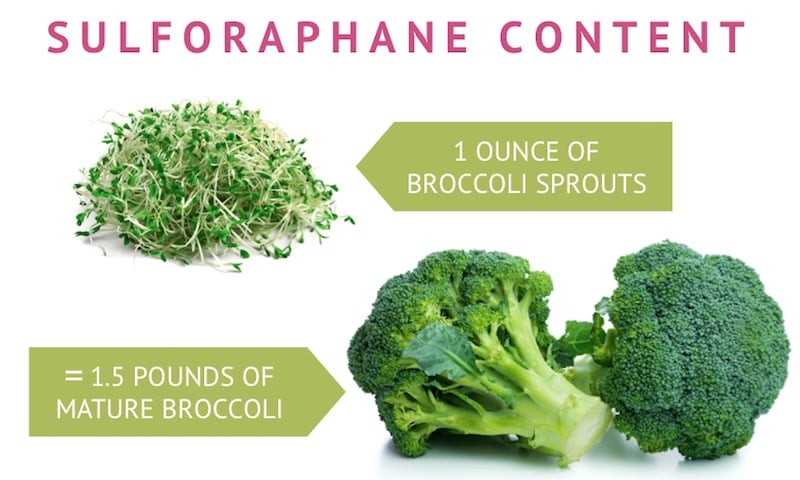
Image from Juicing For Health
- It can boost the immune system by promoting natural killer cells, as evidenced in studies with mice.
- Sulforaphane has anti-viral properties which can reduce the virus load in the body, leading to fewer symptoms and quicker recovery rates from common viruses such as the flu.
- It’s also loaded with both antibacterial and anti-fungal properties which can help fight off unwanted “visitors” in the body/immune system.
- This compound can help protect the skin against UV damage, partially due to the cellular protection it offers as well as its anti-inflammatory properties.
- Sulforaphane can improve digestion because of its anti-inflammatory abilities.
You can find more details on how to grow broccoli sprouts on Wellness Mama.
If you’re looking to learn more, I highly recommend watching ‘Sulforaphane and Its Effects on Cancer, Mortality, Aging, Brain and Behavior, Heart Disease & More’ from Dr Rhonda Patrick who can lead you to further studies and help clarify the scientific terms used in this article.
How To Eat Broccoli Sprouts
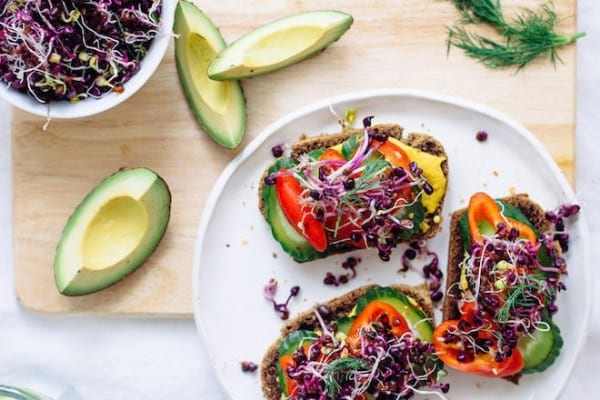
This superfood is so easy to eat and add more of into your diet, which is a big part of the reason I wanted to highlight the broccoli sprouts benefits in this article for you guys.
Remember – part of the process that makes them such a potent powerhouse of nutrition is the chewing, blending or chopping process that transforms enzymes within the plant. Therefore, these are my top consumption recommendations:
- Blend them into a smoothie. If you have a high-speed blender, you will easily be able to release all that goodness into a tasty fruit and veggie smoothie. This is great if you’re not fond of the taste or if you simply like to boost your mornings. They will be relatively easily disguised in any of your favourite smoothie recipes. Try my anti-ageing smoothie here.
- Toss them into a salad. All green veggies are superfoods in my opinion. Top a bed of romaine, spinach, arugula, or any of your favourite mixed veggies and greens with broccoli sprouts for a powerful and tangy boost. Find my salads here.
- Add them to sandwiches and wraps. These will add a yummy and crunchy layer to any wrap recipe you fancy.
- Have them plain. A handful of greens a day keeps the doctor away.
- Top off a stir-fry with them. They’re a great raw addition to cooked foods like most Asian stir-fries and curries.
- Blend them into a dip. Make a homemade dip, guacamole or hummus and blend the sprouts right into it for a zesty, healthy boost (and a splash of colour).
If you don’t quite love sprouts in any of these recipes, try adding some ground mustard seed powder to lightly steamed broccoli. This method increases the bioavailability of sulforaphane because it activates the same enzyme reactions that make sprouts so powerful in the first place. Thanks, Dr Patrick for the tip!
All in all, it’s important to note that receiving your sulforaphane through real food versus a supplement will ensure your body can actually use it and reap the benefits.
Where To Buy Broccoli Sprouts
Broccoli sprouts can often be found at health food stores amongst the other produce. You will find many other sprouts there as well – most notably, alfalfa sprouts or pea shoots. All of these sprouts have an array of awesome benefits, so perhaps you can pick up a few different varieties. Check out your local food co-op for a good selection, and farmer’s markets for a local selection. Your big-box grocery may also be carrying them.
How To Grow Broccoli Sprouts At Home
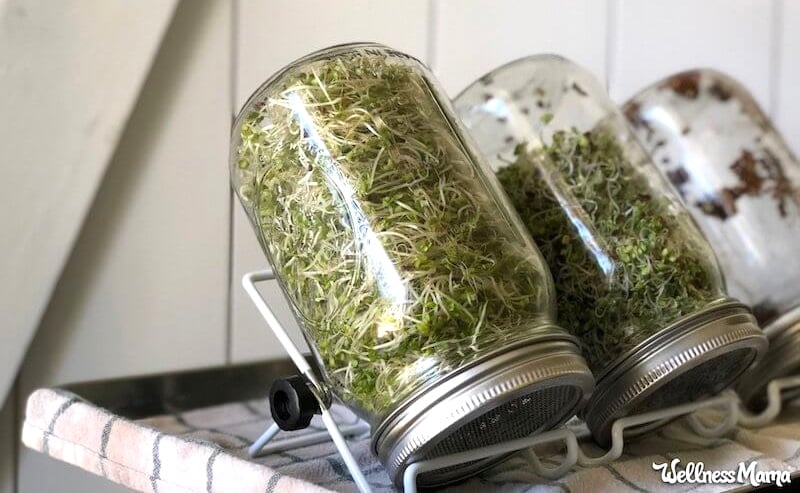
Check out more info on how to grow broccoli sprouts at Wellness Mama.
Whether you simply can’t locate broccoli sprouts in-store, or you’re looking to cut down your grocery budget, growing your own broccoli sprouts is a fantastic option. You don’t need a green thumb to get an abundance of sprouts growing at home for easy and fresh consumption. It’s quite simple to get started on this endeavour with a few simple ingredients and tools.
What You’ll Need:
- Sprouting jars (they come with a stainless steel mesh lid and a stand but you could also just use a regular wide-mouth mason jar and get the mesh lid separately)
- 2 tbsp. broccoli sprouting seeds
- Water
Directions:
- Place the seeds in the jar and cover them with 3-4 inches of water to fully submerge them.
- Store in a dark kitchen cabinet where the temperature is regulated. These sprouts will flourish in a warmer environment.
- Drain all of the water in the morning and replace it with fresh water. Repeat 2-4 times per day.
- Within a few days, you should see the seeds begin to sprout. When the leaves begin to yellow and the sprouts grow to around an inch long, you can move them to the sunlight.
- Continue to rinse and replace water until the leaves turn green. Then, they are ready to eat.
- Store finished sprouted seeds in the refrigerator to best preserve them.
I hope you enjoyed this article on broccoli sprouts. Let me know in the comments if you consume them, sprout yourself or consider doing so.

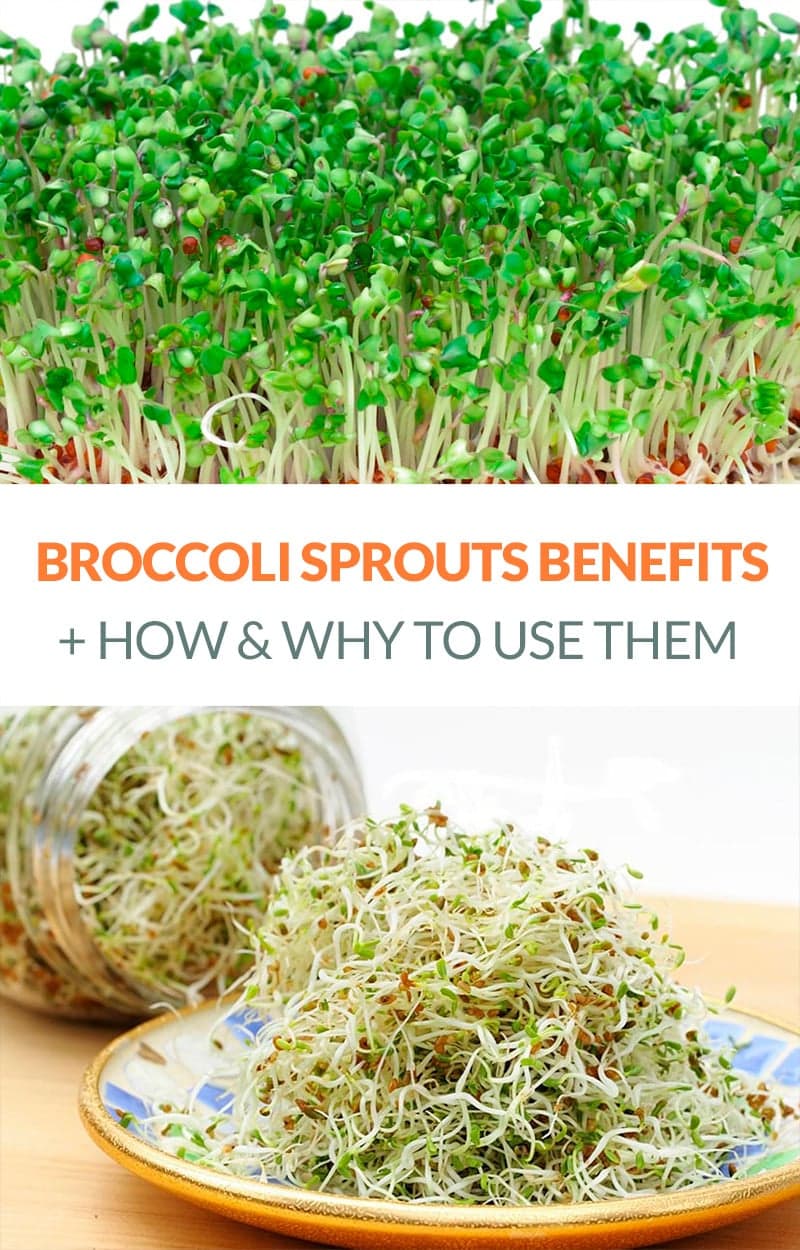

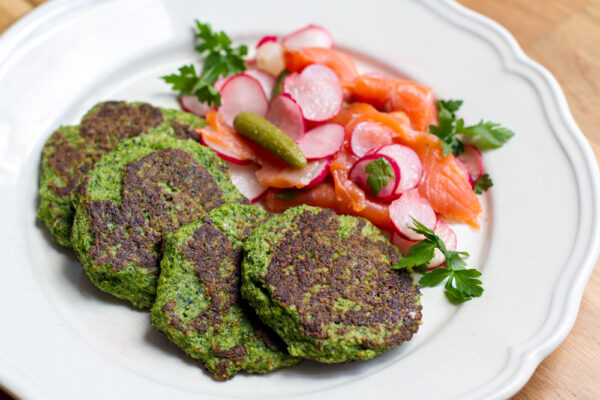
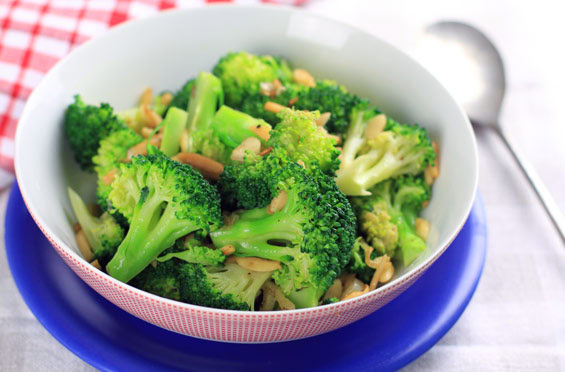
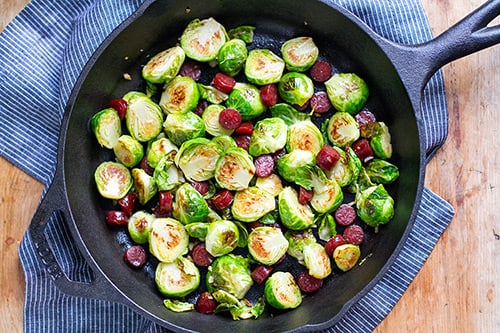
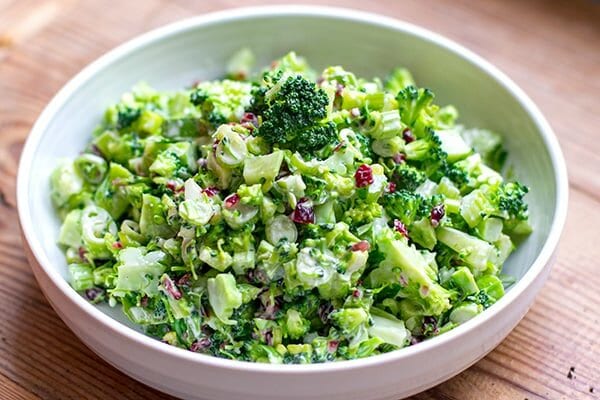
I pass these cute little veggies by all the time because I don’t know what to do with them. I had a feeling they are super healthy. Now I know they are really good for you! I’ll be eating more of them for sure! Thanks so much!
I LOVE sprouts of all varieties, I had no idea broccoli sprouts were so nutritious!
Well researched and very informative article!
Thanks so much.
I have sprouted .. but it has been while .. Great reminder.
Will need to hunt for my jars and sprouting ‘stuff’ and get busy!
I love adding sprouts to my cooking! Thanks for all the great ideas.
You’re welcome!
These do indeed sound amazing — and look delicious! I need to try them!
I have a ton of broccoli seeds in my kitchen! I’ll have to try broccoli sprouts. 🙂
Do it! I can’t wait to start sprouting my own.
Do you still get the sulforaphane benefits from the Broccoli sprouts if you put them thru a juicer?
Yes
3-5 servings per week, is that a one ounce serving?
Yes, think a handful of sprouts.
Just bought them for the first time. Looking forward to trying them.
Do you have any other recommendations for other kinds of sprouts, and their health benefits.
Thank you
In general, most sprouts are quite nutritious. I like alfalfa and even sprouted beans, which are very crunchy and can be added to salads.
I have used these on and off while dealing with h pylori. Now that I have a negative test result, I eat these daily. . The after effects of all those antibiotics and the infection itself, resulting in severe digestive issues caused me to try them again. All symptoms disappeared and I am now eating most foods, have a great appetite and have gained back 12 of the 40 pounds I lost over the last 20 months. Broccoli sprouts are easy to grow. I have told everyone I know about their benefits. I bought a special sprouting jar but prefer using a mason jar and screening that I purchased at a local hardware store.
Hey Barb, thanks so much for sharing your experience with broccoli sprouts. I didn’t realise they had such a positive effect on people with h pylori. My partner has a few digestive issues (and we are actually testing for h pylori) and I wonder if we should do more sprouts now that I’ve read your comment. I’m glad you had such positive results.
I also heard from Dr. Michael Greger that mustard powder is a super activator for converting the sulphoraphane precursors in broccoli and broccoli sprouts into the actual (sulphoraphane) miracle compound. I eat tons of broccoli sprouts almost daily and I will now add mustard powder to the mix! 😉
5 years ago, i was diagnosed by a doctor with; high cholesterol,high blood pressure, diabetes, severe lung disease, sleep apera, obese, and about several other ailments. Given drugs for all.
Today, everything is nomal, except the severe lung disease, i am still obese but 35 pounds less,and sleep apnera.
My blood pressure without any drugs was 108. Cholesterol normal, no drugs. Blood sugar normal no drugs.
About 4 years ago, i started eating broccoli sprouts regularly. I estimate i ate them about over 200 days or more each year. I put them in hot tea with Yogi breathe deep tea and play a baseball video game.
Some typos above.
What’s your article fails to mention, is that microbes living in your gut produce the enzyme necessary to break down broccoli sprouts into sulforaphane. So it’s not necessary to consume the plant itself, as broccoli sprout supplements should deliver a useful dose of this phytochemical.
It’s also worth mentioning that too much sulforaphane can cause thyroid problems.
Broccoli sprouts in powder form says it container 40-50 x more sulforafan. Isn’t it even better to take that then ?
Sure, if you have access to that, take it.
Thank you for sharing this article. My sister kept telling me about these and finally i bought some. Started my first batch yesterday. Very informative 😊!
Thanks for this informative article. My breast cancer nutritionist recommends broccoli, cauliflower, kale, cabbage, among others as vegetables to emphasize. I’ve recently added Broccoli and purple cabbage sprouts.
This article is is encouraging and helps me to understand the how/why it works to prevent recurrence of cancer.
Thanks so much. very informative
Are all nutrients destroyed if you heat them? Thank was thinking of blending them into baked goods.
Best thing about growing broccoli is that you can easily grow them in containers and I love to see these beautiful heads in my backyard.
Well researched and very informative article!
Thanks so much.
I have sprouted .. but it has been while .. Great reminder.
Will need to hunt for my jars and sprouting ‘stuff’ and get busy!
I had an ideal what srouts look liked, now I know. Didn’t know there was so many different kinds. Recently diagnos with uterus cancer.. T Trying to fine out what would help me, they mention Sprouts. They wete out. Soon as I can I will buy so. Don. I don’t know what stage but they said it was aggressive. Need to remive all the female parts & lynnose to find out what stage I’m at. I’m trying to do it all naturally. Just have Surgery 1-27th.
I make broccoli sprouts continuously, and I haven’t found a smoothie that can disguise the sulfuric, radishy taste. I much prefer them in a salad or sandwich, but would like to be able to drink them down. Do you have any specific smoothie recipes to reccomend?
The most complete and impressive report on te benefits of Broccoli Sprouts I’ve ever heard!!! Thank you very much!!! 😄✝🐞❤
Welcome, Bob. Glad you found it valuable and comprehensive.
Excellent information. Thank you
Thanks, glad you found it useful.
The way you’ve worded your instructions is confusing.
The only time the seeds are SOAKED is the initial soak,
after that the seeds are RINSED and DRAINED 2-3 times daily.
Thank you for the article and video. I just harvested my first homegrown broccoli sprouts. I noticed it was easier to pull them up by the roots than cut them off at the stem. Sometimes the roots pulled up seeds as well, so I’m hoping that eating these few sprouted seeds is OK.